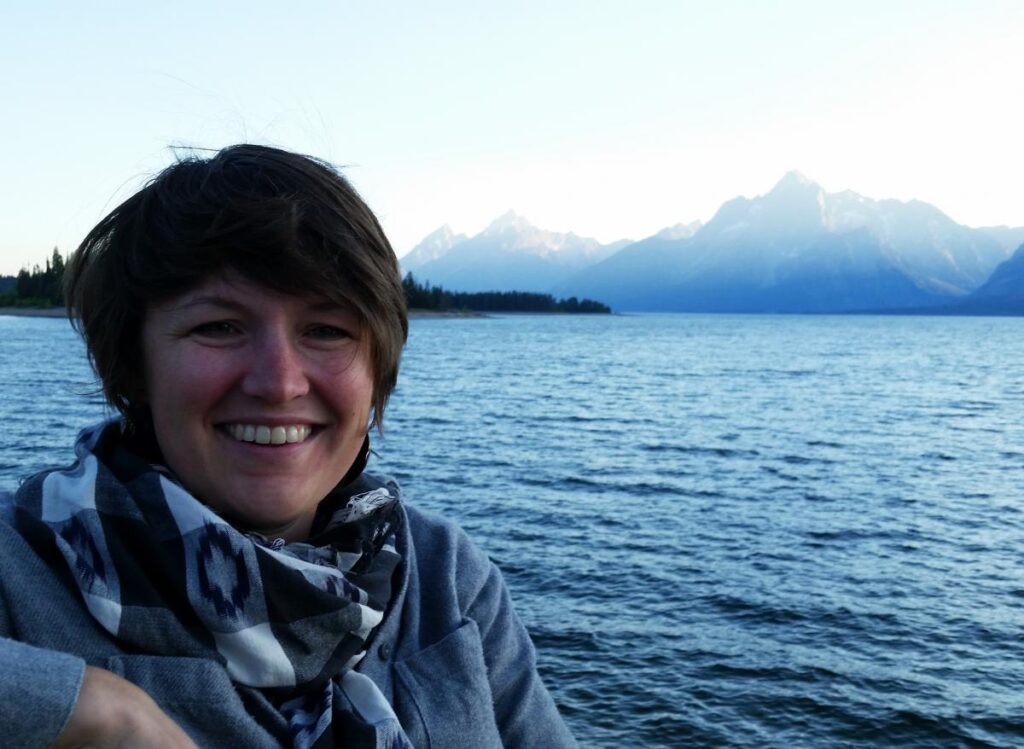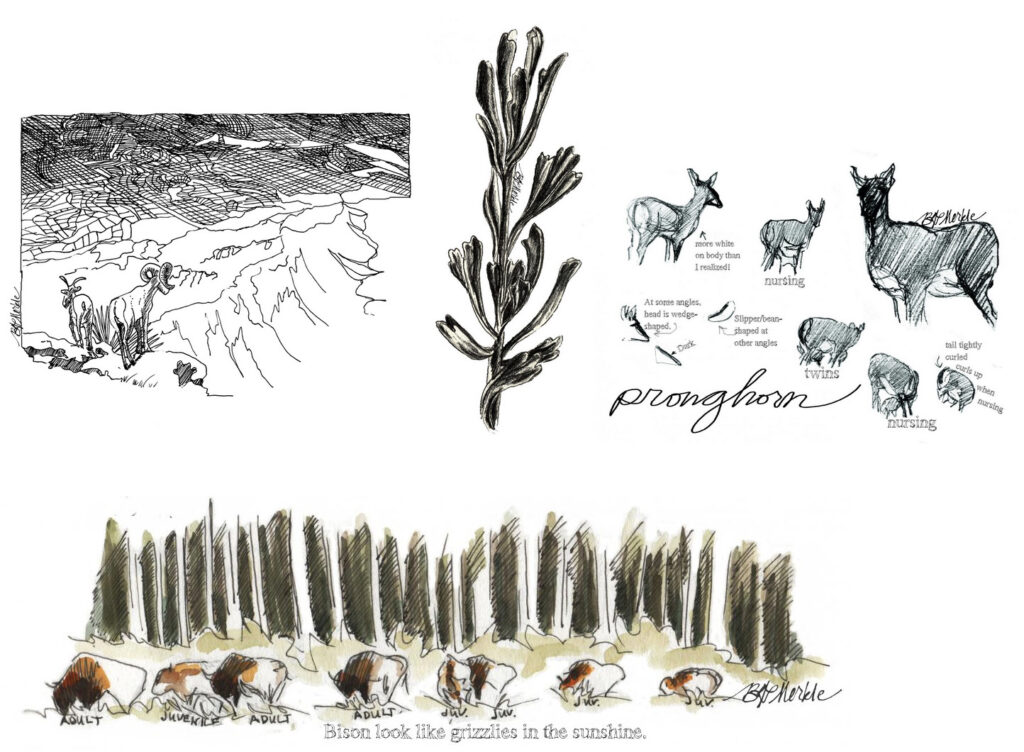Bethann Garramon Merkle has joined the Wyoming Migration Initiative as an illustrator and writer. Merkle will strengthen WMI’s capacity through her illustration abilities, her journalism and creative writing skills, and her experience training scientists in public outreach. She will work on migration-related education activities, including a children’s book about Jet the mule deer.

“As WMI works to share complex research results with the public, Bethann will help us combine migration research with storytelling and science illustration,” says WMI director Matthew Kauffman. “She will help us continue engaging Wyoming citizens in compelling ways.”
A native Montanan from the Rocky Mountain Front region, Merkle is an avid hiker and hunter whose heart is in the Mountain West. “I’m thrilled to join the Wyoming Migration Initiative,” Merkle says. The high plains and mountains are exactly the place I want to be living and working — and communicating about.”
The WMI will benefit from Merkle’s experience training scientists in illustration, multidisciplinary strategies for teaching science, interacting with journalists, and writing for the public. This fall, for example, she will teach a graduate-level seminar at the University of Wyoming where students will learn how to engage public audiences. The course will help further develop UW’s outreach capacity as a land grant institution serving the needs of Wyoming. The course will be informed by what Merkle has learned over a decade of providing professional development for entities such as the American Fisheries Society, the Ecological Society of America’s Science Communication Section (which she co-founded), Harvard Forest, the University of Montana’s Wilderness Institute, and the University of Wyoming’s Science Initiative.
Merkle has spent nearly a decade contributing to a wide range of wildlife research projects in the U.S. and Canada. In collaboration with researchers, she has done fieldwork on bison in Saskatchewan, amphibians in Wyoming, and black bears in Montana. Additionally, she has provided editorial support to researchers publishing about North American and African ungulates in numerous academic journals.
Magazines and newspapers throughout North America have published Merkle’s award-winning photos, journalism, and editorial work. Her illustrations and photography have been commissioned for projects such as a book about desert bighorn sheep, a citizen science project studying germs affecting bees, and an aquatic macroinvertebrate field guide. Her work has been commissioned by entities including the American Scientist (“Drawn to Caribou”), the University of Wyoming’s Biodiversity Institute, Parks Canada, The Nature Conservancy, The Wildlife Society, and Western Confluence (“Amphibious Citizen Scientists”).
In addition to her work as a science writer and illustrator, Merkle recently completed a Master of Fine Arts in creative writing from the University of Wyoming. During her MFA studies, she focused on the role that storytelling and art play in shaping how society understands science. Her ongoing work includes a long-term project exploring “The Ecologically True Story of the Tortoise and the Hare”; studying the efficacy of using drawings to teach science; and investigating how ecological concepts are portrayed in children’s books.
Merkle wants her efforts as an illustrator, writer, and science communicator to help people slow down and experience how science allows us to understand the world around us. “Science and conservation matter,” she says. “And the people doing it matter. One of the greatest ways to share the work of scientists is by helping them tell their own stories.”

Illustration captions:
1. Desert bighorn sheep overlooking development in Tucson, Arizona, which has cut off historic migration routes, essentially stranding the sheep in the Pusch Ridge Wilderness Area. (one of several illustrations commissioned for And Then There Were None: the Demise of Desert Bighhorn Sheep in the Pusch Ridge Wilderness)
2. Terminal leaves of a sagebrush species (Artemesia tridentata) upon which pronghorn and several other Wyoming wildlife species depend for forage and/or shelter throughout the year.
3. Field sketches of a pronghorn doe and young twins observed in Wyoming’s Sierra Madres
4. Quick field sketch Merkle made while doing field research on bison (Prince Albert National Park, Saskatchewan)
